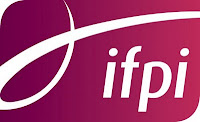A discussion on copyrights or patents is a good way to raise the excitement level in a room full of entertainment or tech executives these days. There are those that feel strongly that copyrights and patents are the stick that stirs the innovation coffee, the key to a start-up getting funded and later making money. On the other hand, you have those that just as strongly feel that copyrights and patents are an old fashioned, out-of-touch method of idea protection that actually stifle innovation instead of encouraging it (the recent rash of patent troll lawsuits plays into this somewhat). The market takes care of their own and the first mover always has the advantage, they claim.
Each has a good argument, and each can point to excesses that drag down the other's position. Well here's a situation that acutely shows how copyright can be taken to the extreme.
A news article in
Private Eye states that the UK's
Newspaper Licensing Agency (NLA) will now charge artists, musicians, labels and PR specialists who use review quotes a fee of $2,000! Now for that amount you get to quote 50 reviews, but the precedent it sets is not a good one.
In fact, what ended up happening is when the NLA sent their declaration around to labels and managers, they were promptly ignored. The NLA then stepped up the campaign and began legal action which not only charged for current quotes but past ones as well, which brought the typical charge up to around $10k instead. It's yet to be seen how this will end up shaking out, so for now it stops anyone in the UK from using review quotes.
This action doesn't seem to be helping anyone. The newspaper and reviewer don't get any additional exposure, so that's bad. The artist, label, PR company can't use the quotes, so that's bad too. The newspaper may make a sliver of money that doesn't really help it's bottom line, so that doesn't seem to be worth the bad blood induced. So it seems that there's no winner here.
I understand that newspapers all over the world are suffering a downturn and are looking for new revenue streams, but this isn't the way to do it. It's debatable whether even a modest charge is fair, but this seems like a shake-down.
In the US, quoting a review can be classified as "fair use" and therefore not subject to such a charge, but you can bet that there are a number of company and association attorneys watching this closely.
----------------------------------
You should follow me on Twitter for daily news and updates on production and the music business.





